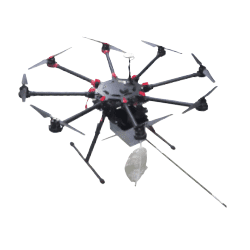Start typing in the text input box to get immediate search results
Volatile Organic Compounds (VOC)
Overview
Volatile Organic Compounds or VOC are organic chemicals that easily vaporize at room temperature. They are called organic because they contain the element carbon within their molecular structures. VOCs include a very wide range of individual substances, such as hydrocarbons (for example benzene and toluene), halocarbons and oxygenates.
Types of VOCs
For instance, hydrocarbon VOC are usually grouped into methane and other non-methane VOC. Similarly, methane is an important component of VOC, its environmental impact principally related to its contribution to global warming and to the production of ground-level or lower atmosphere ozone. Most methane is released to the atmosphere via the leakage of natural gas from distribution systems. Benzene, a non-methane hydrocarbon, is a colourless, clear liquid. It is fairly stable but highly volatile, readily evaporating at room temperature. Since 80% of man-made emissions come from petrol-fuelled vehicles, levels of benzene are higher in urban areas than in rural areas. Benzene concentrations are highest along urban roadsides. Oxygenates arise in vehicle exhausts and via atmospheric chemical reactions. Evaporation of solvents, used for example in paints, causes a release of hydrocarbons, oxygenates and halocarbons to the atmosphere.
Some Volatile Organic Compounds (VOC) are quite harmful, including benzene, polycyclic aromatic hydrocarbons (PAHs) and 1,3 butadiene. Benzene may increase susceptibility to leukemia if exposure is maintained over a period of time. There are several hundred different forms of PAH, and sources can be both natural and man-made. In other words, PAHs can cause cancer. Sources of 1,3 butadiene include the manufacturing of synthetic rubbers, petrol-driven vehicles and cigarette smoke. Therefore, there is an apparent correlation between butadiene exposure and a higher risk of cancer.
List of Common Volatile Organic Compounds (VOC):
- 1,1,1-Trichloroethane
- 1,1,2,2-Tetrachloroethane
- 1,1,2-Trichloroethane
- 1,1-Dichloroethane
- 1,1-Dichloroethene
- 1,2,3 Trichloropropane
- 1,2-Dibromo-3-Chloropropane
- 1,2-Dibromoethane
- 1,2-Dichloroethane
- 1,2-Dichloroethene
- 1,2-Dichloropropane
- 1,3-Butadiene
- 2-Butanone
- 2-Hexanone
- Acetone
- Acrolein
- Benzene
- Bromodichloromethane
- Bromoform & Dibromochloromethane
- Bromomethane
- Carbon Disulfide
- Carbon Tetrachloride
- Chlorobenzene
- Chloroethane
- Chloroform
- Chloromethane
- Dichlorobenzenes
- Dichloropropenes
- Ethylbenzene
- Formaldehyde
- Gasoline, Automotive
- Hexachlorobutadiene
- Hexachloroethane
- Hydrazines
- Methyl Mercaptan
- n-Hexane
- Nitrobenzene
- Stoddard Solvent
- Styrene
- Tetrachloroethylene (PERC)
- Toluene
- Trichloroethylene (TCE)
- Vinyl Chloride
- Xylenes
For a list of Scentroid sensor technology and what chemicals we track, click here!




